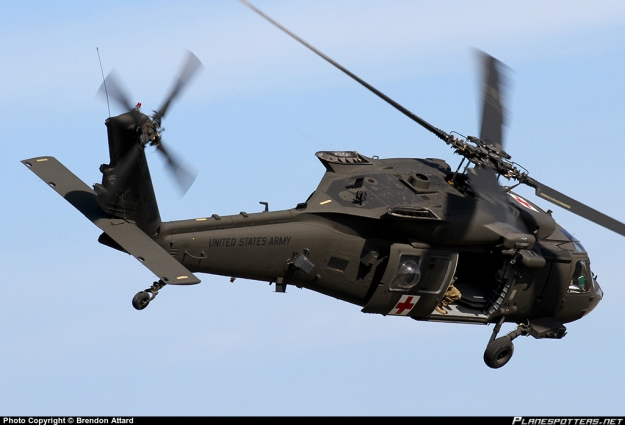Understanding the Mechanics and Design Behind Uh 60 Helicopters
The UH-60 helicopter, typically known as the Black Hawk, stands as a pinnacle of contemporary rotorcraft innovation, embodying a blend of robust engineering and complex technicians. As we peel off back the layers of the UH-60's design, a world of intricate systems and meticulous design comes to light.
History of UH-60 Helicopters
The history of UH-60 helicopters traces back to the late 1970s when the United States Army sought a sophisticated and versatile energy helicopter to change its aging fleet. In response to this need, the Sikorsky Airplane Company developed the UH-60 Black Hawk helicopter. Presented in 1979, the UH-60 swiftly became a staple in armed forces operations as a result of its outstanding capacities.
The UH-60 was designed to master a variety of missions, consisting of army transport, clinical evacuation, digital war, and special procedures. Its ability to adapt to various functions made it a useful possession to the U.S. uh 60. Military and other army forces all over the world
Throughout the years, the UH-60 system has undertaken a number of upgrades and variants to enhance its performance and equal advancing mission demands. These helicopters have seen comprehensive solution in problems such as the Gulf War, Afghanistan, and Iraq, showcasing their dependability and flexibility in varied operational environments. The UH-60's rich background is a testament to its enduring tradition as a leading energy helicopter.

Engine and Power Solutions
Making use of innovative propulsion innovation, UH-60 helicopters are equipped with advanced engine and power systems to ensure optimal performance and reliability in a series of functional situations. The UH-60, typically referred to as the Black Hawk, is powered by two General Electric T700-GE-701D engines, each with the ability of supplying up to 1,940 shaft horsepower. These turboshaft engines give the needed drive for the helicopter to accomplish its missions properly, consisting of troop transportation, clinical emptying, and fight assistance.

Rotor System and Aerodynamics
How do the blades system and the rules of aerodynamics of UH-60 helicopters add to their functional performance and flight abilities? The rotor system of the UH-60 helicopter plays a critical role in providing lift and propulsion. The UH-60 features a four-bladed, completely expressed blades system that permits high ability to move and security throughout flight. This style allows the helicopter to perform content a vast array of missions, from transportation and clinical emptying to fight operations.
Aerodynamics also play a vital function in the performance of UH-60 helicopters. The structured body and rotor blade layout minimize drag, allowing the helicopter to attain greater speeds and far better gas efficiency. The wind resistant style of the UH-60 also adds to its capability to run in varied environmental problems, including high elevations and hot temperature levels.
Avionics and Flight Control Equipment

In its detailed coordination with the rotor system and the rules of aerodynamics of UH-60 helicopters, the avionics go to my blog and trip control systems create an important network of modern technologies forming the aircraft's operational abilities. In the UH-60, these systems consist of electronic display screens, communication radios, GPS navigation, weather condition radar, and auto-pilot systems.
The trip control systems of the UH-60 are accountable for translating the pilot's inputs into the suitable modifications to the blades system, making certain secure flight and maneuverability. These systems contain hydraulic actuators, servos, and computer systems that collaborate to regulate the tail and major blades, as well as other flight control surfaces. By precisely managing the helicopter's flight characteristics, these systems enable pilots to perform a vast find out here now array of missions, from transportation and search-and-rescue to combat operations, with precision and confidence.
Duty and Applications in Aeronautics
Avionics systems in UH-60 helicopters incorporate a variety of digital systems that aid in navigating, communication, tracking, and regulating different airplane functions. These systems include electronic displays, autopilot systems, communication radios, General practitioner navigation devices, and climate radar. Additionally, these systems include safety functions such as auto-pilot modes, terrain recognition warning systems, and stability enhancement systems to boost the overall security and functional capabilities of the UH-60 helicopters in different goals, consisting of troop transport, clinical discharge, search and rescue, and airborne firefighting.
Conclusion
Finally, the UH-60 helicopter is a functional aircraft with a rich history and advanced design. Its engine and power systems, blades system, the rules of aerodynamics, avionics, and flight control systems all collaborate to make it a effective and trustworthy equipment. The UH-60's role and applications in aviation are large, ranging from armed forces procedures to look and save goals. Its proceeded growth and usage show its importance in the field of aviation (uh 60).
In its intricate control with the blades system and the rules of aerodynamics of UH-60 helicopters, the avionics and trip control systems develop a vital network of innovations shaping the aircraft's operational capacities.The trip control systems of the UH-60 are accountable for translating the pilot's inputs into the ideal changes to the blades system, guaranteeing stable flight and ability to move. Avionics systems in UH-60 helicopters include a variety of electronic systems that help in navigation, communication, surveillance, and regulating different aircraft features. Furthermore, these systems incorporate safety attributes such as auto-pilot settings, terrain awareness cautioning systems, and stability augmentation systems to enhance the overall security and functional capacities of the UH-60 helicopters in numerous goals, consisting of army transport, medical emptying, search and rescue, and airborne firefighting.
Its engine and power systems, blades system, the rules of aerodynamics, avionics, and trip control systems all function together to make it a reputable and efficient machine.